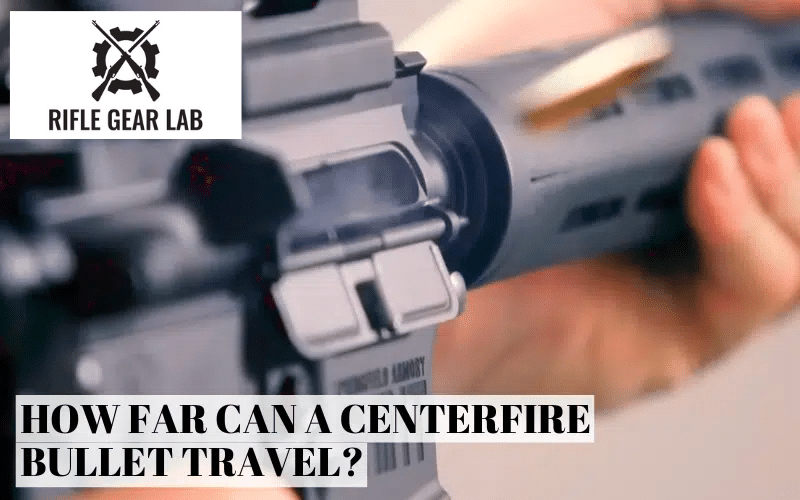How Far Can a Centerfire Bullet Travel? A Comprehensive Guide
Understanding the distance a centerfire bullet can travel is crucial for hunters, shooters, and anyone interested in firearms. This article will explore the factors affecting bullet travel, specific distances for various calibers, and safety considerations when shooting.
What is a Centerfire Bullet?
A centerfire bullet is a type of ammunition that has its primer located in the center of the cartridge case’s base. This design allows for reliable ignition and is generally more powerful than rimfire ammunition, making it suitable for various applications, including hunting and target shooting.
Characteristics of Centerfire Bullets
- Reliable Ignition: The centerfire design allows for consistent firing.
- Variety of Calibers: Available in numerous calibers for different firearms.
- Higher Pressure: Capable of withstanding higher pressures than rimfire cartridges.
Factors Affecting Bullet Travel
Several factors influence how far a centerfire bullet can travel:
1. Muzzle Velocity
Muzzle velocity refers to the speed at which a bullet exits the barrel of a firearm. Higher muzzle velocities generally result in longer ranges.
2. Bullet Weight and Shape
The weight and aerodynamic shape of the bullet play significant roles in its travel distance:
- Heavier Bullets: Tend to retain energy better over long distances.
- Aerodynamic Shapes: Bullets designed with streamlined shapes experience less air resistance.
3. Ballistic Coefficient
The ballistic coefficient (BC) measures how well a bullet can overcome air resistance. A higher BC indicates better performance over long distances.
4. Atmospheric Conditions
Conditions such as air density, temperature, and humidity can affect bullet trajectory:
- Higher Altitudes: Lower air density can lead to longer travel distances.
- Wind Conditions: Crosswinds can push bullets off course.
5. Barrel Length
The length of the firearm’s barrel impacts the bullet’s velocity:
- Longer Barrels: Generally provide higher muzzle velocities, contributing to longer effective ranges.
6. Bullet Spin
Rifling inside the barrel imparts spin to the bullet, stabilizing its flight path:
- Twist Rate: The rate at which the rifling twists affects stability and accuracy.
7. Gravity
Gravity constantly pulls bullets downward, affecting their trajectory over long distances.
Maximum Range vs. Effective Range
Understanding the difference between maximum range and effective range is crucial for shooters:
- Maximum Range: The greatest distance a bullet can travel when fired at an optimal angle (usually around 30 degrees). This distance varies by caliber.
- Effective Range: The maximum distance at which a shooter can expect to hit a target accurately and with sufficient energy to be effective.
Importance of Knowing Both Ranges
Knowing both ranges helps shooters assess safety and effectiveness when firing at different distances.
Distance Estimates for Common Centerfire Bullets
Here are estimates for how far various centerfire bullets can travel:
| Caliber | Maximum Range (Miles) | Effective Range (Yards) |
|---|---|---|
| .22 Long Rifle | 1.5 | 150 |
| 9mm | 2-3 | 50 |
| .223 Remington / 5.56 | 0.85 | 400-500 |
| .308 Winchester | Up to 3.5 | 800 |
| .30-06 Springfield | Up to 4 | 600 |
| .338 Lapua Magnum | Up to 4 | 1000 |
Notes on Specific Calibers
- .22 Long Rifle: Known for its low recoil and noise, it has an effective range of about 150 yards but can travel up to 1.5 miles under optimal conditions.
- 9mm: Commonly used in handguns, it can travel between 2 to 3 miles but is effective only up to about 50 yards.
- .223 Remington / 5.56 NATO: Popular among military and civilian shooters alike, it has an effective range of around 400-500 yards but can reach approximately 0.85 miles.
- .308 Winchester: A versatile round used in hunting and target shooting, it has an effective range of about 800 yards with a maximum range potentially exceeding 3 miles under favorable conditions.
- .30-06 Springfield: A classic hunting cartridge with an effective range of around 600 yards but capable of traveling up to approximately 4 miles.
- .338 Lapua Magnum: Designed for long-range shooting, this caliber can reach distances over 4 miles while maintaining effectiveness up to about 1000 yards.
Safety Considerations
When handling firearms and shooting centerfire bullets, safety should always be your top priority:
- Know Your Target and What Lies Beyond It: Always be aware of your surroundings and ensure that your shot will not endanger others.
- Use Proper Backstops: Ensure there are adequate backstops behind your target to catch any stray bullets.
- Follow Local Laws and Regulations: Be aware of local laws regarding shooting distances and safety zones.
- Practice Responsible Shooting: Always handle firearms safely, keeping them pointed in a safe direction and ensuring they are unloaded when not in use.
Summary Table of Bullet Ranges
| Caliber | Maximum Range (Miles) | Effective Range (Yards) |
|---|---|---|
| .22 Long Rifle | 1.5 | 150 |
| 9mm | 2-3 | 50 |
| .223 Remington / 5.56 | ~0.85 | 400-500 |
| .308 Winchester | Up to ~3 | ~800 |
| .30-06 Springfield | Up to ~4 | ~600 |
| .338 Lapua Magnum | Up to ~4 | ~1000 |
FAQ Section
Q1: How far can a centerfire bullet travel?
Centerfire bullets can travel several miles depending on the caliber and environmental conditions; however, effective ranges vary significantly based on accuracy and energy retention.
Q2: What factors influence how far a bullet travels?
Factors include muzzle velocity, bullet weight and shape, ballistic coefficient, atmospheric conditions, barrel length, bullet spin, gravity, and wind conditions.
Q3: What is the difference between maximum range and effective range?
Maximum range refers to the furthest distance a bullet can travel when fired at an optimal angle; effective range is the distance at which a shooter can hit a target accurately with sufficient energy.
Q4: Are all centerfire bullets equally powerful?
No, different calibers have varying power levels based on their design, intended use, and construction materials.
Q5: How do I ensure safe shooting practices?
Always know your target and what lies beyond it; use proper backstops; follow local laws; practice responsible handling of firearms at all times.
Conclusion
Understanding how far a centerfire bullet can travel is essential for safe shooting practices and effective marksmanship. By considering factors such as caliber, environmental conditions, and safety measures, shooters can optimize their performance while ensuring responsible use of firearms.For further information on bullets and ammunition characteristics, you may refer to Ammunition – Wikipedia.



